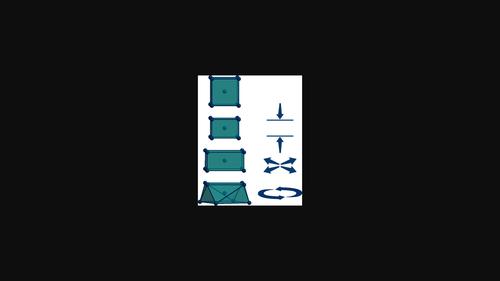Polynator:一种识别和定量评估晶体结构中多面体和其他形状的工具
IF 6.1
3区 材料科学
Q1 Biochemistry, Genetics and Molecular Biology
引用次数: 0
摘要
Polynator是一个Python程序,能够识别晶体结构中的配位多面体、分子和其他形状,并评估它们的扭曲程度。扭曲是通过将模型的顶点拟合到选定的一组原子来量化的。与早期的程序相比,模型可以是可变形的,这使得它们可以表示一个点群或一系列形状,如所有三角棱镜的集合,而不是一个特定的、刚性的形状,如等边三角棱镜。该程序带有图形用户界面,可以免费使用。本文讨论了它的工作原理,并举例说明了它的一些应用。本文章由计算机程序翻译,如有差异,请以英文原文为准。

Polynator: a tool to identify and quantitatively evaluate polyhedra and other shapes in crystal structures
Polynator is a Python program capable of identifying coordination polyhedra, molecules and other shapes in crystal structures and evaluating their distortions. Distortions are quantified by fitting the vertices of a model to a selected set of atoms. In contrast to earlier programs, models can be deformable, which allows them to represent a point group or a range of shapes such as the set of all trigonal prisms, rather than a specific, rigid shape such as the equilateral trigonal prism. The program comes with a graphical user interface and is freely available. This paper discusses its working principle and illustrates a number of applications.
求助全文
通过发布文献求助,成功后即可免费获取论文全文。
去求助
来源期刊
CiteScore
10.00
自引率
3.30%
发文量
178
审稿时长
4.7 months
期刊介绍:
Many research topics in condensed matter research, materials science and the life sciences make use of crystallographic methods to study crystalline and non-crystalline matter with neutrons, X-rays and electrons. Articles published in the Journal of Applied Crystallography focus on these methods and their use in identifying structural and diffusion-controlled phase transformations, structure-property relationships, structural changes of defects, interfaces and surfaces, etc. Developments of instrumentation and crystallographic apparatus, theory and interpretation, numerical analysis and other related subjects are also covered. The journal is the primary place where crystallographic computer program information is published.

 求助内容:
求助内容: 应助结果提醒方式:
应助结果提醒方式:


